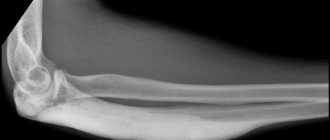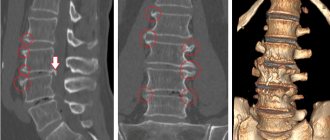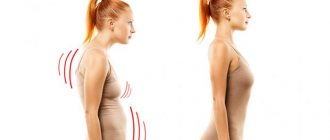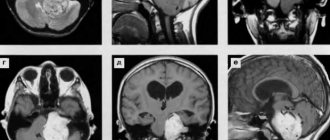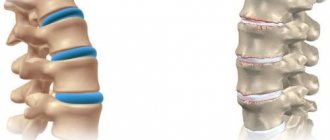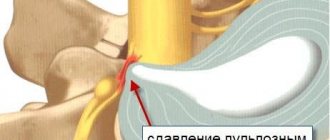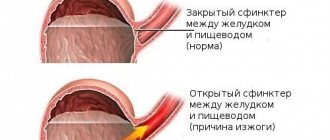A herniated cervical spine is not a very common phenomenon. The load on the neck is much less than on the lumbar region. But since the vertebrae here are small and weak, under certain factors a hernia develops. In this disease, the jelly-like inner core extends beyond the intervertebral disc.
A herniated cervical spine is characterized by certain symptoms that require treatment. A hernia does not form immediately here. First, the patient develops osteochondrosis, and then over time, protrusions occur - protrusion of the intervertebral disc. If left untreated, these processes lead to the formation of a hernia. The annulus fibrosus ruptures and the core of the intervertebral disc leaks into the spinal canal. This causes severe pain and a number of associated symptoms.
Hernia in the cervical spine. What difficulties arise?
The main problem is that a hernia in the cervical spine is not easy to detect, because it, the department, is quite small. It can be compared to a “bottleneck”, only in the human body, this is the most vulnerable place.
The volume of the neck is obviously small, and the same can be said about the diameter of the spinal canal in this section of the spine. However, many blood vessels and, of course, nerve canals constantly pass through such a small volume. Their high density can be explained by the fact that the brain needs a good supply of oxygen and receives all the necessary signals from nerve endings.
Under normal conditions, this high density of the most important vessels and channels would not be a problem. The cervical region is characterized by high mobility; even in a person who follows a sedentary lifestyle, the neck receives almost constant load. This is how the human body tries to “insure” itself against the possible occurrence of problems.
It is in this constant load that the “other side of the coin” is hidden. The cause of more spinal diseases is a metabolic disorder. Often this phenomenon depends on age, but today, if we take into account not the best environmental situation and not the most correct nutritional system, these problems can arise even in young people.
The result, as already mentioned, is the development of osteochondrosis and other types of spinal diseases, in particular a hernia in the neck. Worst of all are the intervertebral discs.
What are the symptoms of this disease?
Symptoms of a neck hernia usually include acute or chronic pain, so-called “lumbago” in the neck area, pain that radiates to the shoulder joint, to the arms, as well as attacks of numbness in the hands, frequent crawling “goosebumps”, and decreased sensitivity of the fingers.
In addition, increased irritability, tearfulness, headache, dizziness, sudden jumps in blood pressure, tinnitus, mild cough and a tickling sensation, which are quite difficult to get rid of, are also symptoms of a disease such as cervical hernia.
It is worth noting the following feature: at the initial stage of the disease, pain in the posterior vertebrae of the neck is inconsistent, often aching in nature. In addition, headaches and dizziness are also observed due to disturbances in the circulatory system (blood flow to the brain).
During the further development of the pathology, the patient’s well-being noticeably worsens. The pain becomes constant, often truly intolerable. Partial numbness of the upper extremities occurs, gait is disturbed, various autonomic disorders, muscle atrophy appear, and paralysis of the respiratory tract may even develop.
All of the above are signs of a herniated cervical spine that can tell you about the onset of the disease at an early stage.
Causes
Cervical hernia usually occurs in people who lead a sedentary lifestyle. These include drivers, office workers, scientists, etc.
A hernia occurs in the neck for the following reasons:
- poor circulation, which weakens bone tissue (more common in older people);
- diseases of the spine (osteochondrosis, osteoporosis, Schmorl's hernia and others);
- mechanical damage.
A number of factors have a strong influence on the condition of the ridge and increase the risk of hernia formation. These include:
- metabolic disorders;
- insufficient amount of fluid;
- bad habits (alcohol, smoking, etc.);
- passive lifestyle;
- infectious diseases of the spine;
- birth defects;
- poor posture, habit of slouching.
Why exactly is this disease dangerous?
If you notice any of these symptoms described above, please note that it is important to contact a doctor in a timely manner, as there is a danger that a hernia in the cervical spine will compress one of the arteries that feeds the brain and passes through the spine. This means that blood circulation in the brain will be disrupted, which over time can lead to a stroke.
In addition, over time, inflammation of the muscles or ligaments around the hernia occurs. Thus, sometimes cervical radiculitis begins to develop, which is considered a very painful and intractable disease. You can avoid it by starting to treat a disc herniation on time, because it is often the cause of neck sciatica.
As already mentioned, the cervical region is very mobile and is always under stress as it supports the head. With a disease such as a herniated disc in the cervical spine, throwing the head back high or turning sharply is very dangerous. Any even slightly careless movement can lead to not only pain, but also compression of nerves or arteries. And this can threaten loss of sensitivity in any part of the body and, what is much worse, paralysis or stroke.
If you have symptoms of an illness such as a cervical hernia, remember that late contact with a specialist will only complicate the situation and the treatment will take longer; in addition, do not forget about the possibility of dangerous complications arising in the advanced stage of the disease.
Prevention and prognosis
A timely diagnosed and treated cervical hernia eliminates the risk of developing additional complications, and if you constantly monitor your health after recovery, the prognosis for a full recovery is favorable. To avoid relapse, it is recommended to regularly perform a set of exercises selected by your doctor, and periodically undergo courses of physical therapy and manual massage. It is also important to normalize your daily routine, eat right, lead an active and healthy lifestyle, and consult a doctor at the first symptoms, and not self-medicate.
How to overcome the disease?
With this diagnosis, the treatment process begins as soon as a complete diagnosis has been carried out. It is worth noting that the attending physician should conduct many different studies in order to correctly determine the size and location of the intervertebral hernia, and select the necessary treatment methods. We will not dwell on the issue of diagnosis for now, but rather consider all possible types of treatment for such a disease as intervertebral hernia in the cervical spine.
In general, there are two main methods of treatment - traditional (or conservative) and surgical.
How to avoid surgery?
Conservative treatment methods assume that recovery will occur without surgery. In this case, the specialist faces two main tasks:
- relieve the patient from pain and various neurological syndromes;
- prevent the progression of the disease and the occurrence of new spinal hernias.
For this reason, the first stage of treatment is supposed to relieve pain syndromes. To do this, the patient is first prescribed bed rest for a short period. In addition, anti-inflammatory and painkillers are prescribed. Their task is clear – pain relief.
Moreover, if painkillers only mask the pain, then anti-inflammatory drugs actually eliminate inflammation. Because of this, the process of compression of nerve endings decreases or disappears altogether, which ultimately leads to a decrease in the sensation of pain.
In many cases, this is quite enough for the initial stage of treatment and relief from pain.
The next stage is to prevent the progression of a hernia in the cervical spine and its prevention. For this, there is no longer any need for medications (most often); the main methods at this stage are massage and special therapeutic exercises.
Treatment methods
A cervical hernia is treated differently, depending on its size, location, severity of symptoms, and the presence of other diseases. Based on the examination results, the doctor prescribes conservative treatment or surgery.
Conservative methods
Treatment of cervical hernia is possible without surgery. Conservative therapy can eliminate symptoms and alleviate the patient's condition. It also helps stop the destruction of cartilage tissue and relieve muscle spasm. Treatment is carried out comprehensively and includes all necessary measures: medications, procedures, massage, physical education, etc.
Among the medications prescribed for the treatment of spinal hernia:
- non-steroidal drugs against inflammation (relieve swelling, pain, improve blood circulation);
- analgesics (relieve pain and make it possible to lead a normal lifestyle);
- muscle relaxants (relieve muscle spasms, swelling, pain);
- chondroprotectors (accelerate the restoration of cartilage tissue, slow down its destruction, make intervertebral discs more elastic);
- a complex of vitamins and minerals (strengthens the immune system, accelerates the body’s regeneration process).
Conservative treatment also includes physiotherapeutic procedures. They can be varied and are designed to stop the development of a hernia and speed up the process of recovery of the body. The most popular procedures include magnetic therapy, electrophoresis, paraffin therapy, etc.
Physical therapy exercises should not be performed during an exacerbation, but when the pain subsides, they can be useful. Almost all of them can be performed at home. Starting from simple bends and turns, the load on the neck can be gradually increased. A set of classes should be prescribed by a rehabilitation physician in accordance with the patient’s condition.
Massage for a neck hernia is one of the indicated procedures, but it should be noted that it should only be performed by a massage therapist. Sessions include not only a massage of the cervical region - they also cover the arms, shoulders, entire back, especially the spine.
Swimming and yoga are very useful for this disease. These exercises provide an even load on the body and allow you to expand the space between the vertebrae and release pinched nerves.
The use of orthopedic collars, for example, the Shants collar, the Kuznetsov applicator, is also allowed.
Surgical intervention
Intervention in the spine is very dangerous, and surgery is prescribed only as a last resort. Read more about surgery to remove a herniated disc in the cervical spine.
Surgery is necessary if:
- Conservative therapy is ineffective in this case, and the person continues to suffer from pain;
- the hernia progresses sharply;
- large hernia;
- a hernia leads to difficulty breathing or impaired cerebral circulation.
During neck surgery, an incision is made in the neck through which parts of the destroyed disc are removed. If necessary, it is replaced with an implant.
What are the features of a C5-C6 disc herniation? Why is it especially dangerous?
Doctors call ruptures of the fibrous rings in the discs between the 5th and 6th vertebrae of the neck “C5-C6 disc herniation.” This is one of the most common locations for a neck hernia, which is often combined with protrusion, instability, segmental insufficiency, and arthrosis in the C4-C5, C6-C7 vertebrae.
This disease is often preceded by chronic pain, osteochondrosis, limited neck mobility, and disc protrusion at the initial stage, most often circular.
Uncovertebral arthrosis in the C6-C7 vertebrae indicates the existence of osteochondrosis with complications: osteophytosis and the formation of pathological joints.
In medical practice, only the posterior (also called dorsal) type of hernia plays an important role, which can contribute to the narrowing of the intervertebral canals and canals of the spinal cord.
If a nerve root is pinched, vertebrogenic radiculopathy of vertebrae 5-6 may occur.
Before this disease appears, it is preceded by osteochondrosis of the neck in the area of vertebrae 4-5, 5-6. Due to the fragility of the intervertebral disc, microtrauma occurs and protrusions form. After some time, a protrusion appears.
What are the most common signs of a C5-C6 hernia?
When a hernia occurs in this area, infringement of the sixth nerve root or stenosis of the spinal cord canals occurs (this depends on the type of hernia).
With a disease such as a herniated cervical vertebrae, completely different symptoms can occur. We are talking specifically about a C5-C6 hernia.
Firstly, there is pain and numbness in the thumbs and index fingers, the sides of the arms, hands, neck, and headache. Secondly, this is a decrease in the reflex of the biceps muscle, the possible appearance of weakness when abducting and turning the arms inward. Thirdly, slight weakening when extending the hands and decreased mobility in the neck.
Types of hernia in humans
Modern medicine diagnoses three main types of hernias in humans. External abdominal diseases account for up to 70% of all such diseases. They are located on the front or side wall of the abdomen and imply that the disease exits under the skin.
They are divided into the following subspecies:
- inguinal and inguinal-scrotal hernia;
- umbilical or periumbilical;
- femoral;
- ventral.
Internal abdominal hernias have a prevalence of up to 5%. They are located in the abdomen and usually extend into other cavities. They can be diaphragmatic (esophageal), and also manifest themselves through protrusion of the omentums of the bursa and other abdominal pockets.
Vertebral hernias account for up to 20-22% of all such diseases. This involves displacement of the discs and compression of the spinal cord or nerve roots. They can appear throughout the entire spine, including the cervical spine.
Other types of hernias are considered quite rare and are not included in the main categorization of these diseases. They account for 3-5% of all cases. Such complications include spinal cord complications , as well as cerebral hernias . Muscular and pulmonary problems may also occur .

